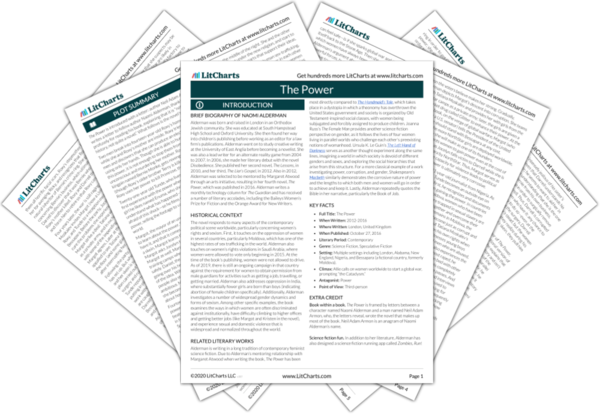Noor and Tunde’s first sexual encounter also provides parallels with typical gender relations. Alderman shows how Tunde simply accepts the fear and pain that he has to endure as a part of sex (in contrast to today’s society, where it is sometimes expected of women to simply endure that pain). But there are also parallels in that this pain is unnecessary: avoiding it simply requires a greater degree of control on the part of the person with more power to hurt, and in flipping the genders, Alderman makes readers more aware of that issue.
